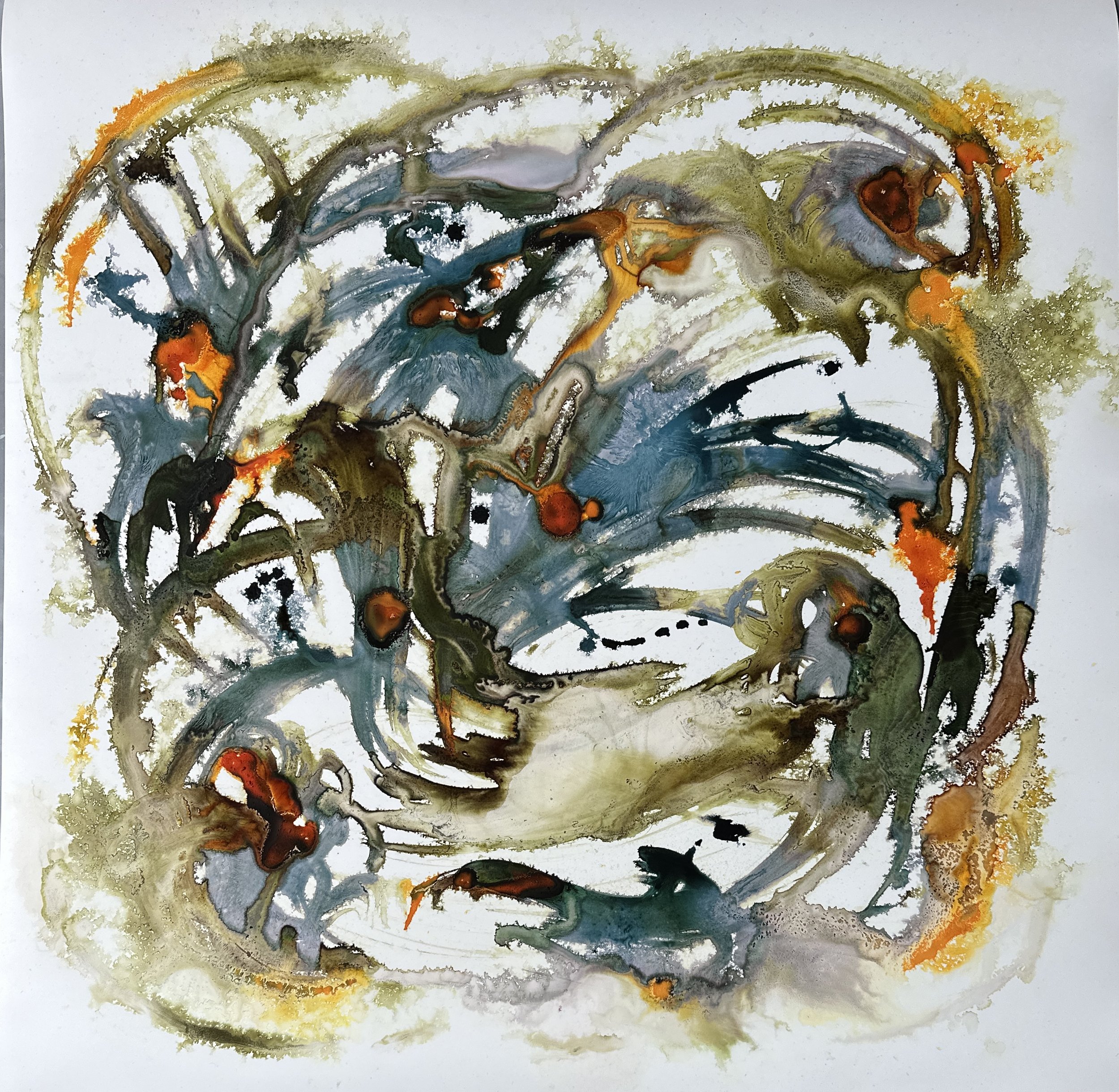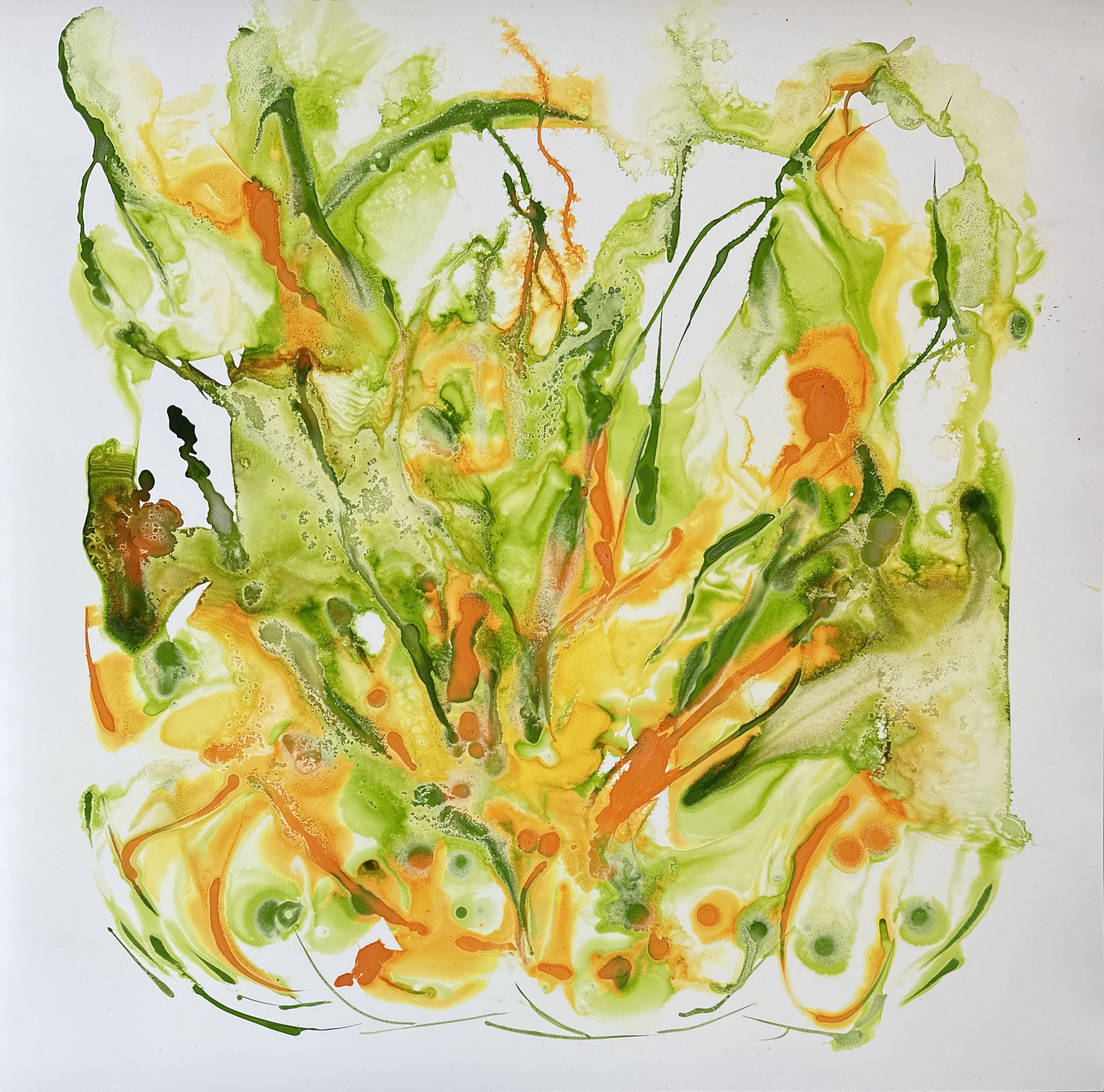Jill Krutick works with the Miami University and permanently gifts three 30 x 30 inch watercolors on yupo paper, which are displayed at the Hefner Museum of History, Miami University, Oxford, Ohio.
Miami University 2023-2024 FOCUS theme: Environmental Justice. The FOCUS initiative is teaming up with the 2023-2024 John W. Altman Program in the Humanities.
Jill Krutick met author, Michele Navakas, during her Coral Beliefs exhibition at Pyramid Hill Sculpture Park & Museum in 2023. Navakas had just published a book about the history or coral, “Coral Lives: Literature, Labor & the Making of America,” published by the Princeton University Press. Both Navakas and Krutick teamed up with the Hefner Museum of History at Miami University and Director, Steve Sullivan to put together a collaborative project. Below is a description of the project, which was unveiled in tandem with a lecture by “superstar scientist” Dr. James Porter who discussed “Blurring the Lines Between Medicine and Ecology While Saving Coral Reefs in the Florida Keys.”
Coral: Animal, Vegetable, Mineral?
Coral. These diverse species are emblematic of life forms so different from us that it’s hard to understand them. We have long wondered: Are they animal, vegetable, or mineral? And while some people dedicate their lives to saving them, others still question whether they are worth the effort.
This exhibition brings together art, literature, and science to explain what coral is and showcase its importance to humanity—not only biologically, but also culturally and spiritually. The exhibition is a collaboration among three people: Steven M. Sullivan, Director of the Hefner Museum of Natural History; Michele Navakas, Professor of English and author of Coral Lives: Literature, Labor, and The Making of America (Princeton University Press, 2023); and Jill Krutick, a New York-based abstract expressionist painter whose practice explores the impact of climate change on our Earth and sea.
For many people in the twenty-first century, coral symbolizes the ongoing planetary climate crisis. The loss of coral tends to be measured in biological and economic terms: Reefs support about a quarter of all marine species and a billion people. They are integral to the global economy and the stability of coastlines. And though reefs often seem out of sight and out of mind, our actions directly affect them through our waterways and the products and pollutants that we put there.
Yet the meaning of coral to humans transcends any easy calculation, and our relation to reefs is more complex than biological science or economics alone can fully measure. In Coral Lives: Literature, Labor, and the Making of America Navakas tells the story of coral—not only as an essential component of the global ecosystem and economy but also as the focus of writing, storytelling, ritual, and painting that, for centuries, has given meaning and direction to human lives. Coral has historically been a highly sought-after ornament used for display and personal adornment, an object of wonder and curiosity that raised significant questions about classification and categories, and a powerful political metaphor, for early Americans in particular. As we lose coral, we also lose a material that humans have long relied on to help us consider some of our most pressing societal and political challenges, a number of which are discussed in the excerpts from Navakas’s book in this exhibition.
The emotion of encountering living coral for the first time is something few people experience. Through her art, Krutick attempts to simulate the wonderment of that experience, to stimulate empathy and excitement for a beautiful but enigmatic organism, and to promote actions that may save coral reefs around the world. The three works she created for this exhibition are companion pieces to Coral Beliefs, an 85 foot-long immersive site-specific piece made for Pyramid Hill Sculpture Park & Museum in Hamilton, Ohio. More than just an eco-statement about the need to preserve our fragile biosphere, Coral Beliefs is a philosophy about community, culture, and connectivity. The watercolors on display use color, movement, shape, and drying techniques to portray an abstract look at coral as “Animal,” “Vegetable,” and “Mineral” in the context of a cultural and environmental continuum.
We hope that this collaboration among science, literature, and art demonstrates a vibrant synergy among diverse disciplines—and shows the importance of that synergy for helping us assess and address the full stakes of our current ecological crisis.



